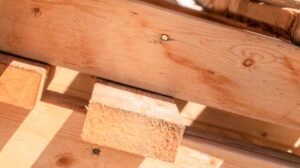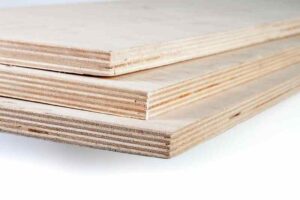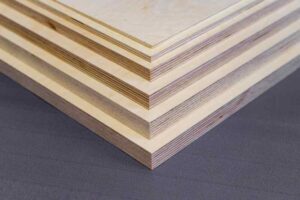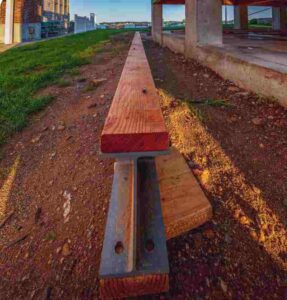I Think I Know What You Mean, But…
Episode II: More of Your Jargon or Mine?
Every profession and field of practice develops a language unique unto itself. While some acronyms and terms are specific to a field, others are used by two or more trades – albeit not always with the same meanings.
In this second installment of “I Think I Know What You Mean, But…” we highlight five more phrases we see in specifications and requests for quotes that are misused, have multiple meanings or have no meaning at all (at least they’re not recognized trade jargon) to lumber suppliers. For each, we’ll identify what we think may have been meant, possible alternate interpretations, and an explanation as to why the phrase may be misleading or require additional context to ensure that the correct material is quoted.
1. Heat Treated Lumber/Plywood
What We Think You Mean: Kiln Dried Lumber/Plywood
Alternate Interpretations: Heat Treated Lumber/Plywood

Why This Is Not Splitting Hairs: Lumber/plywood used for construction is typically kiln dried which is why when we hear “heat treated” we suspect the requestor is unfamiliar with the term or process, “kiln dried,” so is using a phrase that seems similar. HOWEVER, “Heat Treated” lumber, a.k.a., Thermally Modified wood, is a real thing, but it is not quite the same as Kiln Dried.
During the kiln drying process, wood is heated to 90° – 120°F to reduce its moisture content in a controlled manner. This kills any mold or mildew that may be present and reduces post-installation expansion/ contraction that can lead to cracks in walls and finishes.
The heat-treating process involves heating wood to higher temperatures (133° – 190°F) in an oxygen-free oven for purposes of sterilizing wood to kill any bugs and mold/mildew that may have found their way into the wood. It also makes the wood more rot resistant, though it weakens the structural value of wood by nominally one-third so is best suited for non-structural applications.
2. Fireproof / Non-Com / Non-Combustible Lumber/Plywood

What We Think You Mean: Fire Retardant Treated (FRT) Lumber/Plywood
Alternate Interpretations: Wood that will not burn because it’s been modified to make it impervious to fire.
Why This Is Not Splitting Hairs: Fire-retardant is not the same as fireproof. Building codes consider wood a combustible material – even when treated with a fire retardant. Only glass, stone (including concrete, masonry block, brick), and metal are recognized as non-combustible materials.
3. Type X Lumber/Plywood
What We Think You Mean: Fire Retardant Treated (FRT) Lumber/Plywood
Alternate Interpretations:
- Fire-proof lumber/plywood (not a thing)
- Lumber/plywood that can be used for exterior applications.

Why This Is Not Splitting Hairs: Whereas gypsum board is designated Type X when it is fire-resistant, that nomenclature is NOT used in the lumber industry. Instead, any wood that is chemically treated to resist fire is specified as fire-retardant-treated wood (FRT or FRTW).
When building codes call for a Type A fire-retardant, then the material specification should include the phrase “pressure-treated fire-retardant.” Remember that “pressure-treated” describes how the fire-retardant chemical is applied to the wood. Class B fire-retardant treated wood would be coated with a fire-retardant. (The FR chemical would not be imbued into the wood cells.)
In the plywood world, the “X” designation is used as part of a plywood grade specification. “X” indicates the panel is assembled using an Exterior bond classified adhesive. For example, ACX or CDX plywood.
4. Exterior Fire-Retardant Plywood
What We Think You Mean: Plywood treated with an exterior type of fire retardant.
Alternate Interpretations:
- Plywood that is treated with a chemical to make it both fire retardant AND rot/pest resistant.
- Plywood graded as an Exterior panel (C-face and C-back, or better) that has been treated with a fire retardant.

Why This Is Not Splitting Hairs: The phrase “exterior fire-retardant plywood” causes confusion as all the suggested meanings seem reasonable. However, we can rule out the first alternative meaning as there is not one chemical that can provide protection against both rot and fire. In a circumstance where both treatments are desired, the specifier needs to decide whether rot/pest resistance or fire retardancy is the greater priority.
If an FRT Exterior grade panel is desired, then specifying the specific grade of plywood desired is very helpful, e.g., AC, BC, CC.
Further, explicitly stating if an interior- or exterior fire-retardant treatment is required or providing the application of the FRT wood would help to make sure the correct material is purchased. Currently, the only Class A fire retardant chemical treatment for lumber and plywood that will be used in high moisture environments or exposed to weather is ExteriorFireX™. There is no difference in the performance of the exterior vs. interior chemical, but the exterior chemical does not leach out of the wood when subjected to ongoing damp or humid environments.
Remember that even if the plywood is considered an Exterior panel and/or treated with ExteriorFireX, the material still requires painting, staining or sealing to achieve rot resistance.
5. Structural Plywood
What We Think You Mean: Structural I Rated Sheathing
Alternate Interpretations: Plywood used for load bearing purposes
Why This Is Not Splitting Hairs: All plywood has structural value, so specifying “structural” plywood does not add clarity to the specific type of plywood needed. However, there is a subcategory of Rated Sheathing plywood called “Structural I” or “Struct I.” If Struct I plywood is not required, leave out “structural” as a descriptor of the plywood.
Struct I plywood provides more resistance to shear and racking forces than a standard Rating Sheathing panel because of how the Struct I panel is constructed. When plywood panels are assembled, the veneers are laid with their grains perpendicular to each other. A Struct I panel incorporates veneers placed diagonally as well as perpendicularly to achieve greater resistance to shear and racking forces.

Just by considering the above five phrases, we can see why having an awareness of the end use for the lumber or plywood being quoted or ordered, and using the correct nomenclature for the materials based on their application can help avoid misunderstanding when quoting a job or ordering materials.
To promote greater awareness and understanding of misused terms or phrases that otherwise create confusion when sourcing lumber and plywood, we’ll periodically post additional articles to draw attention to these phrases and offer guidance to help you specify materials more effectively.
About Curtis Lumber & Plywood
Whether purchasing for stock or to support your customers’ unique project requirements, trust CLP’s second-to-none depth of experience and technical knowledge to ensure your customers get the high-quality and correctly treated material they need.
If you are a lumber retailer and have questions about treated wood products or need to place an order by the trailer load, unit or piece, call Curtis Lumber & Plywood at (703) 972-1947.

